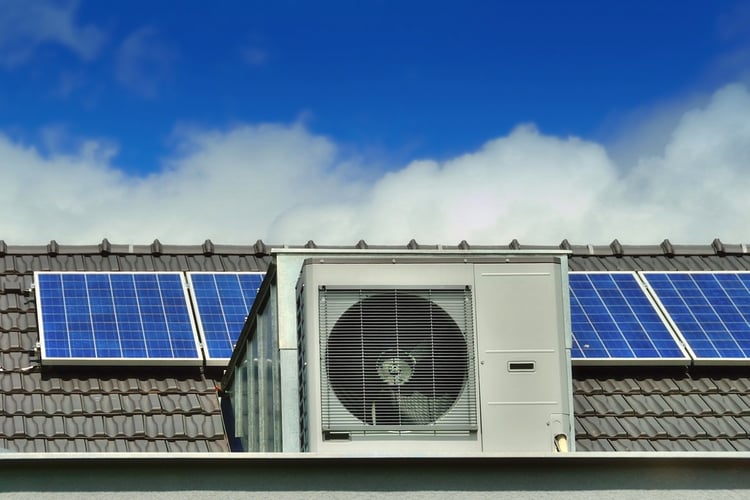Natural gas prices and consumption are expected to continue to rise through the winter, according to the latest Short-Term Energy Outlook published by the U.S. Energy Information Administration. Gas heating systems have been a popular option for homes and businesses: they use a fuel that is supplied as a public utility and their operating costs are low under normal conditions. However, natural gas prices have increased dramatically in 2022 and heating systems using gas are losing their cost advantage. The combination of solar energy and high-efficiency heat pumps is now a viable option for building owners.
According to US EIA forecasts, the Henry Hub spot price will exceed $9 per million BTU by January 2023. They are also estimating record gas consumption numbers for 2022: 86.6 billion cubic feet per day on average, which represents an increase of 3.6 Bcf/d compared to last year. Let's consider that the electricity sector is the largest consumer of natural gas, which means that higher kilowatt-hour prices can also be expected. According to the latest inflation report published on September 13, electricity prices increased by 15.8% in the 12-month period ending in August 2022, while utility natural gas prices increased by 33.0%.
Reduce your building's energy costs with green technologies such as solar panels and heat pumps.
With a solar energy system and high-efficiency heat pumps, your building can reduce costly electricity and gas consumption from utility companies. As the price of these services continues to rise, the savings achieved by solar panels and heat pumps will also increase.
How do solar panels and heat pumps achieve synergy?

Under favorable local conditions, each kilowatt of solar panel capacity can provide more than 1,400 kWh of electricity per year. You can visit the World Bank Group's Global Solar Atlas to check the productivity of solar panels in a particular location. Just zoom in on the exact location and click, and the Atlas will display a figure called Specific Photovoltaic Power. For example, if your site has a photovoltaic output of 1,500 kWh/kWp and you install a 100 kW solar panel, you could generate around 150,000 kWh per year.
A properly sized solar panel can generate enough electricity to offset grid consumption. However, you can also upgrade from a traditional gas heating system to high-efficiency heat pumps and size the photovoltaic array to cover your consumption as well. With this configuration, a building can partially or completely cover its electricity and heating needs using a local energy source that operates with zero emissions.
There are many types of heat pumps available, for both space heating and hot water applications. Compared to traditional resistance heaters, air source heat pumps typically use about 2 to 4 times less electricity, while ground source heat pumps up to 6 times less. Thanks to their high performance, heat pumps can multiply the value of solar electricity. One kilowatt of solar generation can be converted into 2-6 kW of heating output by a heat pump, while a resistance heater can only provide one kW of heat per kW of electricity.
As can be seen from the latest inflation figures, gas prices have risen by 33%, while electricity prices have risen by 15.8% over a period of one year. For buildings that rely on gas heating, the increase in operating costs was twice as high compared to buildings that use electric heating.
Even greater savings are possible with the use of heat pumps and solar energy, as the system is not affected by rising electricity tariffs. Solar panels require an initial investment and only a small maintenance cost. It is necessary to replace the inverters after about 10 years, and also the batteries if your system uses them. However, you have an accurate estimate of ownership costs from the start, while electric rates are volatile and unpredictable.
Importance of purchasing high-quality solar panels and heat pumps

When purchasing any green technology for a building, we must be aware that not all products on the market offer high quality. If you install poor solar panels or heat pumps, you can expect problems like low efficiency and short lifespan. Low quality equipment also presents a greater risk of electrical failures, putting your property at risk.
You can now find high-quality solar panels with warranty coverage of up to 25-30 years and a 30% federal tax credit is available for the next 10 years thanks to the Inflation Reduction Act. In the case of heat pumps, the best recommendation is to look for ENERGY STAR units; its performance has been successfully tested by manufacturers' independent laboratories in accordance with federal standards.

